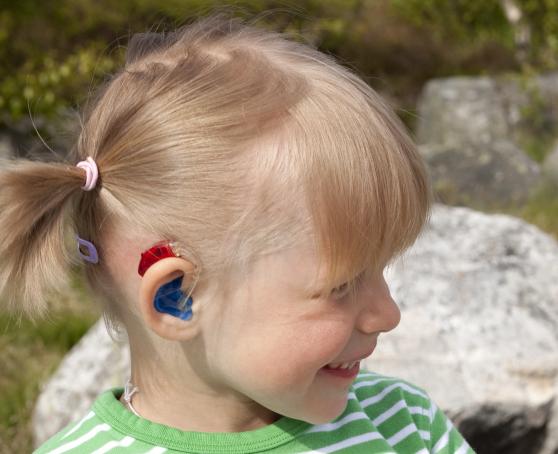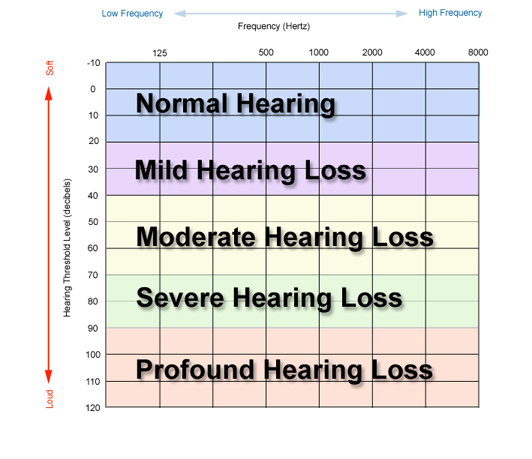
Hearing loss can be anything from mild hearing loss to complete deafness. The severity and type of a hearing impairment is identified in hearing examinations and is represented in an audiogram in decibels (the Y axis) and in Hertzs (the X axis). However, the decibels do not directly tell us, how the child manages. The effects are very individual, depending on the characteristics of the child, rehabilitation and environment, but the descriptions below are for guidance.
Mild or moderate hearing loss: the child hears speech with hearing aids and is able to communicate by using lip-reading as support. Most hearing impaired children fall into this category.
Severe/profound hearing loss: children hear only loud noises without hearing aids and often need a hearing aid or cochlear implant in addition to visual support in order to learn conversational speech.
Impact of a hearing injury
Mild: 20–40 decibels
• Will benefit from hearing aids and lip-reading
• May require individual speech therapy
• Difficulties in hearing quiet speech, especially in group situations
• Speech perception is difficult in noisy situations
Moderate: 40–70 decibels
• There are difficulties in hearing speech, especially in separation of consonants, which often is also reflected in the child’s own speech
• Needs hearing aids
• Often there is a need for individual speech therapy
• Will benefit significantly from the possibility of lip-reading
• May need signs to support speech
• Difficulties in hearing speech, particularly in group situations
Severe: 70–95 decibels
• May hear load speech at close range
• Needs hearing aids. The need for a cochlear implant is determined on an individual basis
• Speech perception is difficult even with a hearing aid, especially consonants are difficult to separate
• The opportunity for lip-reading is important
• May need visual methods to support speech
• Individual speech therapy is often needed for the support of the development of speech
Profound: 95 decibels >
• The majority of these children receive a cochlear implant at about 1-year of age to either one, or both ears. Getting individual speech therapy is then particularly important.
• With the help of a cochlear implant, hearing, communication with speech and the use of a FM system is possible.
• Supportive listening conditions and the possibility of lip-reading are then important.
• Needs, especially in the early stages, visual communication support methods.





